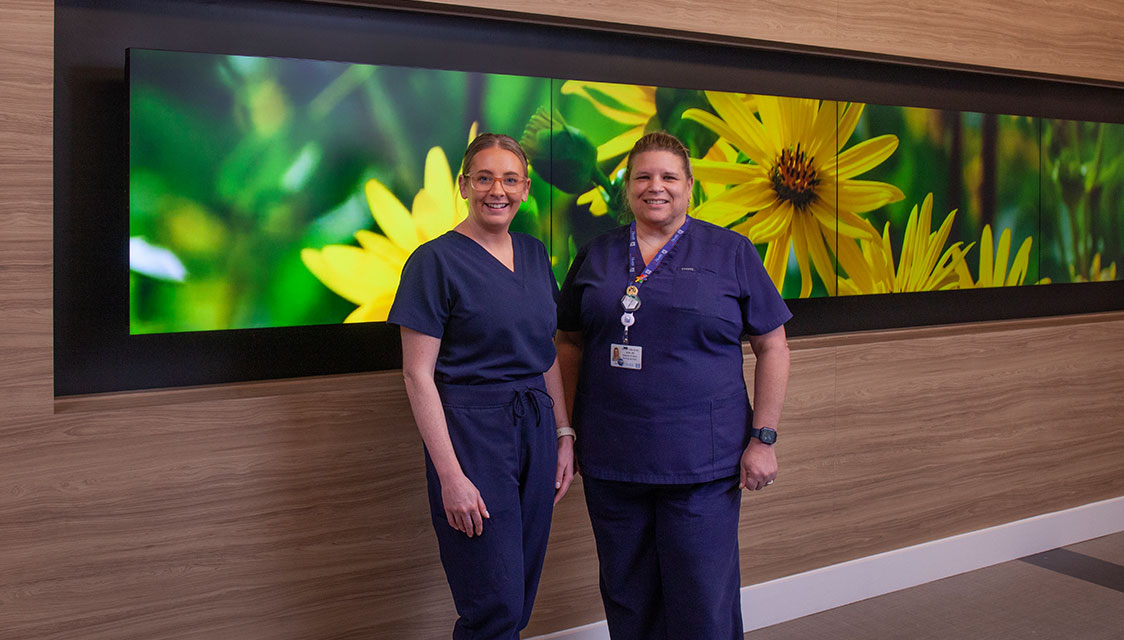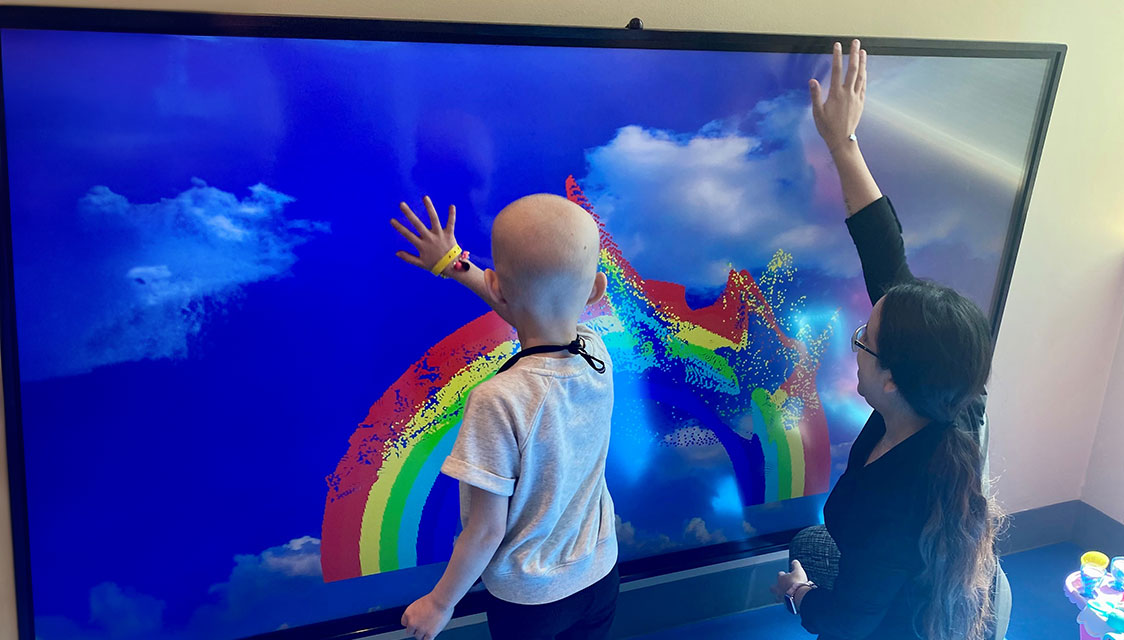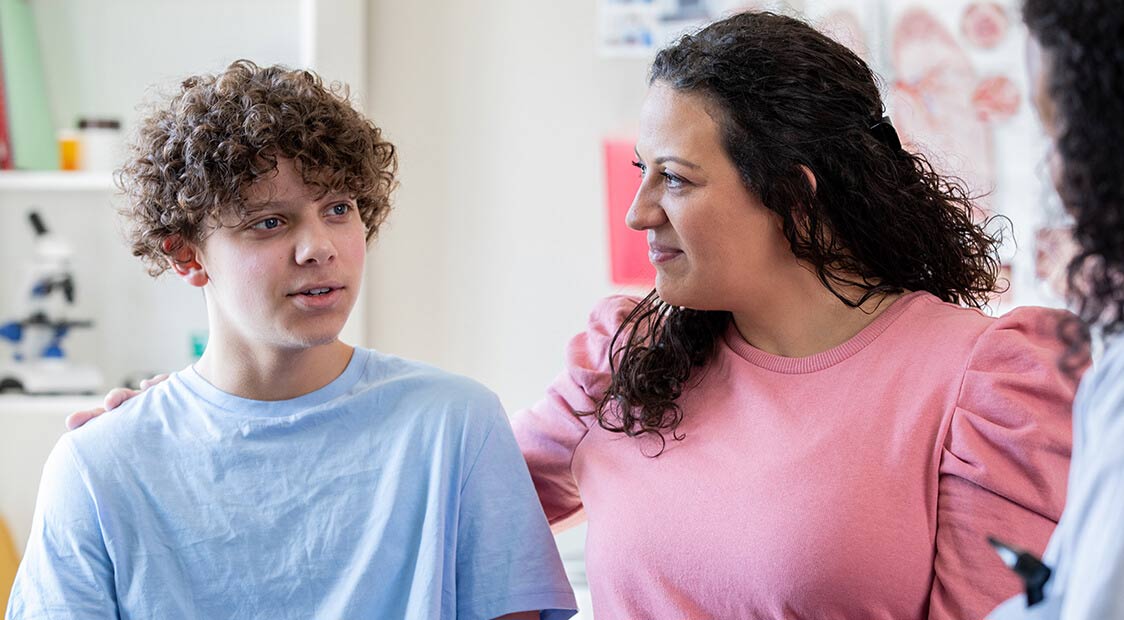The UF Health Proton Therapy Institute creates an environment of healing
By Christina L. Mershell
Share:

In the past year, the UF Health Proton Therapy Institute has strived to create an environment of healing for all its patients during cancer treatment. In 2023, The Walter and Yvonne Wood Resting Room opened, focused on creating a respite for adult patients. And, more recently, the Institute enhanced its playroom, designing a restful space for its pediatric patients and promoting therapeutic engagement.
A Respite for Adult Patients
Yvonne Wood, a parent of an adult patient, saw how much patients like her daughter could benefit from a quiet place to rest in between multiple treatments in one day. Ongoing studies support this thought and many cancer treatment facilities around the country are opening resting or quiet rooms for their patients. The Institute created a multidisciplinary planning group — made up of physicians, nurses and staff — to delve into what were the ideal elements to create the most healing place for their patients.
The Wood Resting Room is comprised of three patient bays, each providing a semi-private space with soft low lighting to create a calm, serene environment. They are outfitted with a recliner for patients and a visitor’s chair. Separated by opaque resin panels, each bay faces a large, shared video wall, displaying a series of nature scenes specifically chosen to evoke senses of relaxation and calm for patients.
Every aspect of the patient’s experience has been considered in the design of the Wood Resting Room, from warm blankets to a water cooler and hospitality station, as well as individual charging stations. To design the space most effectively with the patients’ needs in mind, the Institute consulted with a local interior designer who specialized in health care spaces. The Wood Resting Room’s color palette involved careful selection to create a serene patient environment. Light blues and blue greens were used to bring a sense of tranquility and restfulness, representing water, nature and leaves. Those cooler colors were contrasted with warmer wood tones and neutral beiges.
This long-awaited space for our patients was made possible through the generosity of the Wood family.
Pediatric Playroom Receives a Technological and Therapeutic Upgrade
An interactive gaming wall was added to the Institute’s playroom and is complete with educational and sensory software to occupy young patients and promote therapeutic engagement. The technology is the first of its kind in any proton therapy treatment facility in the United States.
The 86” interactive touch screen offers developmental and sensory therapy treatment through play, but it is also geared towards offering developmentally appropriate education. While we are still in the development phase and are planning to create resources specific to proton therapy as a whole and our individual center, this system is already loaded with other games — including one where you “zap” cancer cells with a radiation beam.

The playroom upgrades are a part of the Institute’s child life program. Play therapy recognizes the vital role of normal childhood experiences, ensuring that children have time to play and simply be kids, a crucial aspect of supporting them during this challenging period. These methods also help alleviate stress and anxiety during cancer treatment. Research shows that with the support of a child life program, children need less anesthesia to complete treatments.
The only other proton therapy cancer treatment facility using this technology is the child life team at University College Hospital – London. The Amazing Interactives team — the developers of the technology, the London facility and the UF Health Proton Therapy Institute plan to collaborate to develop tailored educational content for patients undergoing proton therapy treatment.
A grant from the Climb for Cancer Foundation and donations received through the Children’s Fund and Shirley Tomlinson Proton Pediatric Patient Enhancement Endowment Fund made the technology upgrade possible.
Patient-centered Care
The commitment to creating healing spaces for patients is driven by our dedication to putting the patient first. In following research and listening to our patients, we saw the need to enhance our respite spaces. Our hope is that each patient feels welcomed and cared for while receiving cancer treatment here.
Read more about the Walter and Yvonne Wood Resting Room.


